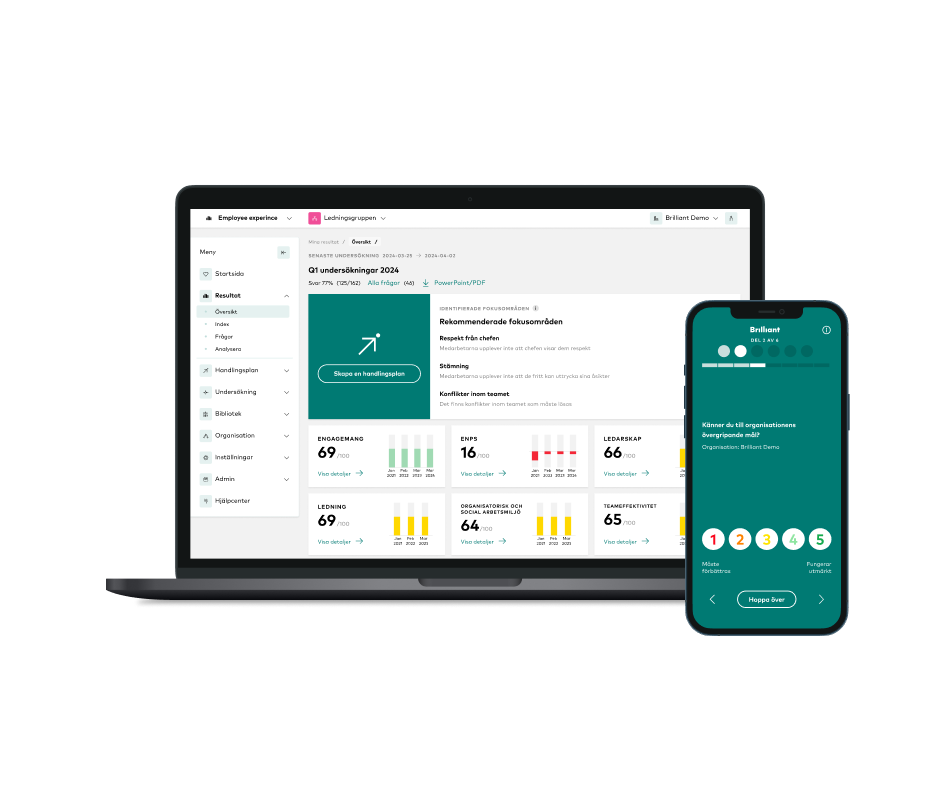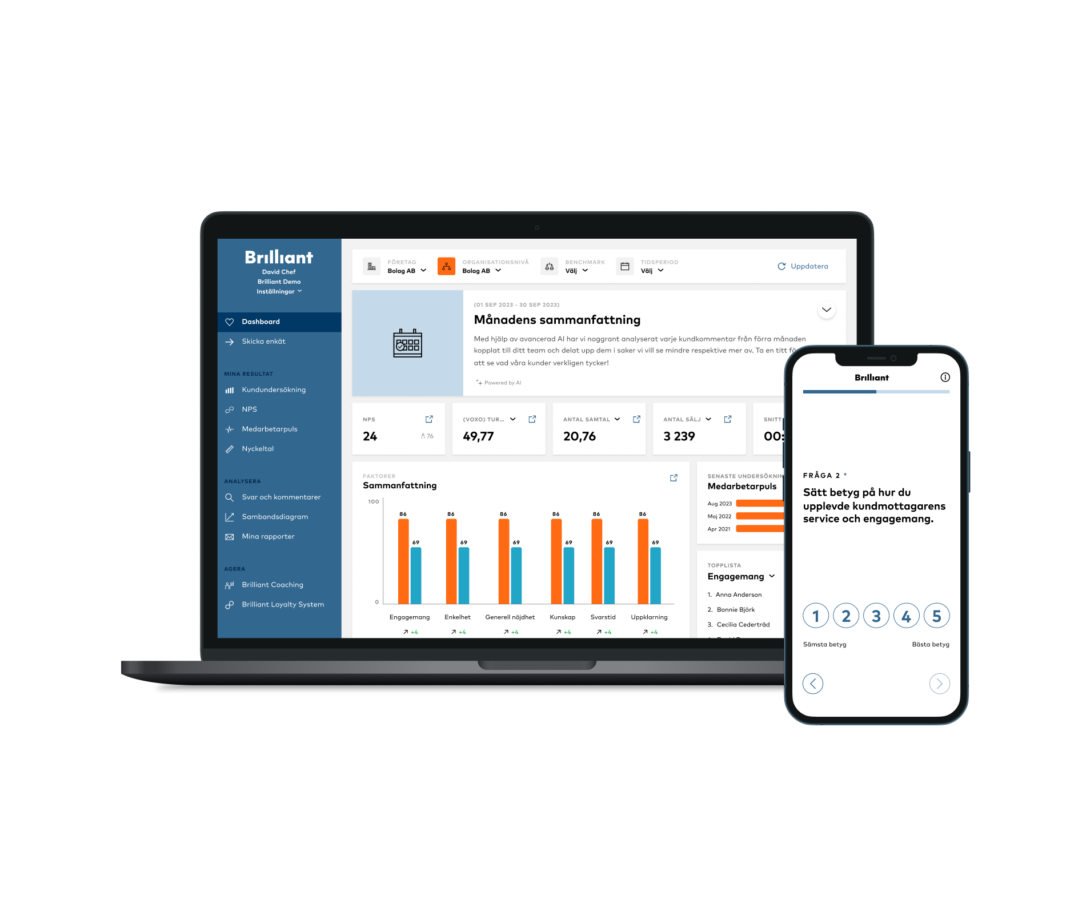Unlock your organisation’s full potential and strengthen relationships with both customers and employees. Brilliant’s platform measures, analyses, and transforms your data into valuable insights that are easy to act upon. The result? Data-driven decisions, a comprehensive overview, and a stronger business.

Smart and interactive platform that enhances relationships
with both customers and employees
From Measurement to Action and Change

EX platform
Employee Experience
Empower your people – discover the full potential of your employee experience
Understand what drives engagement, motivation, and loyalty. With Brilliant’s platform, you can measure, analyse, and act on employee feedback to build a thriving workplace.

CS platform
Customer Service
Turn every interaction into a loyalty-building moment
Brilliant helps you uncover how your service teams are performing and where to improve. Use insights to boost satisfaction, reduce churn, and create consistently great service experiences.

CX platform
Customer Experience
Strengthen every step of the customer journey
From first touchpoint to long-term loyalty – Brilliant’s platform gives you the insights you need to improve the entire customer experience and drive business growth.
We are Brilliant
Brilliant is one of the top-performing companies, providing a data-driven survey and action platform created for measuring customer and employee experience. With more than 20 years of experience and 80 employees, we provide actionable insights on people that make the difference in businesses all over the world. Our insights will bring out the true potential in people, helping companies to drive change, engagement, and results.
Why you should choose Brilliant
01.
Local presence, global reach
We are a reliable partner that helps customers in over 50 countries in many different languages.
02.
Benchmark from 24 industries
Every year we find out how more than three million people think and feel.
03.
Expertise and consulting support
With our 20 years of experience in developing organizations, we will help you create profitability, engagement, and behavioral changes.
04.
Appreciated partner with cNPS 69
400 happy customers develop their organizations with our data and insights.
A smart and interactive platform that strengthens customer and employee relationships
From measurement to action and transformation – Unlock your organisation’s full potential and strengthen relationships with both customers and employees. Brilliant’s platform measures, analyses, and transforms your data into valuable insights that are easy to act on – enabling data-driven decisions, a holistic perspective, and a stronger business.